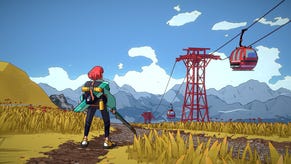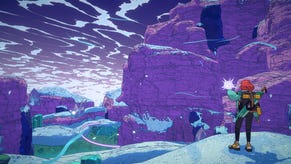Dungeons of Hinterberg review - adventure with a generous spirit and a thoughtful soul
Takedown burnout.
Out in the dungeons I'm hunting for treasure and glory, but back in the town I'm hunting for Renaud. This is weird, really, because Renaud looks like hard work. He dresses like Blade and he speaks entirely in maxims. He's the best of the slayers and he can't wait to tell you about it.
But Renaud has a gift for me. He'll unlock a combo meter if I spend an evening hanging out with him. And I just love combo meters. Dungeons of Hinterberg's is particularly good. Slice slice slice and the numbers go up, as does your attack and your defence. It's a nice way to do more damage while feeling more competent. It's worth an evening lost to awkward chat to get that.
This is Dungeons of Hinterberg in microcosm. The game is set in an Alpine spa town where the local economy turns on the presence of magic. Portals to dungeons appear all around, and there's a brisk trade in tourists turning up to puzzle and battle their way through them. You play as a former lawyer who's turned up in town because of career burnout. Now every day you pick a dungeon, grab a sword, and head out to smash things up in the name of feeling better.
That's half of the game, though. Because at night you're back in town, dungeon fun over, and you have to work out how to spend your time. At first you're meeting people and choosing whether to hang out to boost basic social skills, which open up better and different hanging-out options in the future. But about seven hours in two things will become clear: you can min-max all of this, by checking your log book and getting an advance sense of the perks that hanging out with each townsperson will provide. And also, there's a bit more going on back in town than just a neat way to handle RPG progression.
We will get to that. For now let's look at the two parts of the game, dealing with the dungeons first. These are a bit of a wonder, as it happens, divided into a handful of biomes that give you particular magical skills to use that are generally keyed to the dungeon's tricks. So an early rocky dungeon gives you a chain to attach to objects and yank them around and a bomb to blast through weak bits of wall. A later dungeon - one of my favourites - went full Mario Galaxy with spheres of ice that I could wander around and rocket between, grinding rails on a magical snowboard.
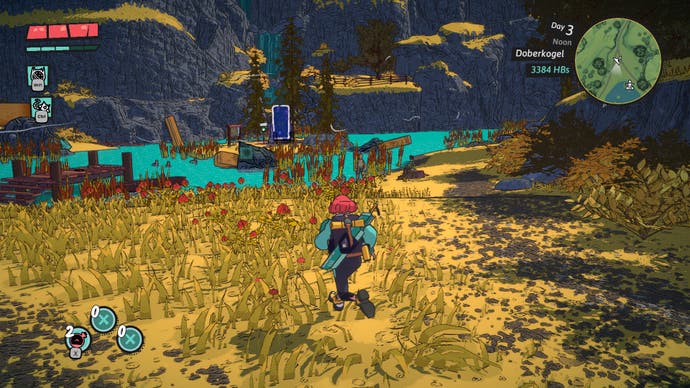
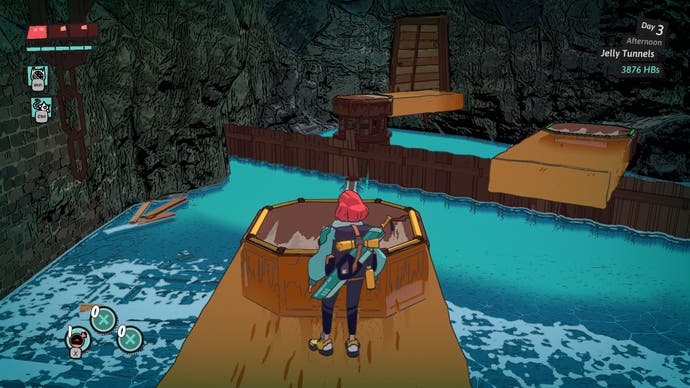

Dungeons reuse art and assets but they're much pickier about ideas: each one seems to have a stellar puzzle, whether you're weighting down switches, leaping between minecarts, or bumping open doors by conjuring blocks of jelly. And these puzzles are threaded in alongside combat, which, for my first few hours with the game, slightly underwhelmed me. Then it clicked.
And it clicked not just because of the combo system I got from Renaud. It clicked because alongside Soulsy stamina-and-dodge fun, I could also use my magical powers from the rest of the dungeons, which meant that that block of jelly could be used to encase foes, that magical snowboard left an icy wake behind it, and a certain electrical power - well, not to spoil it, but it's one of the best things I've ever been granted in a game.
Beyond that there's special moves, which you equip and can swap in and out. They all come with a recharge time that's separate from your magic recharge, and some of them are deliriously fun. One of the first I received turned out to be my favourite - a spin attack that always goes on just longer than I'm expecting - but the fun here comes from experimentation, mixing up offensive and defensive stuff, targeted and area attacks.

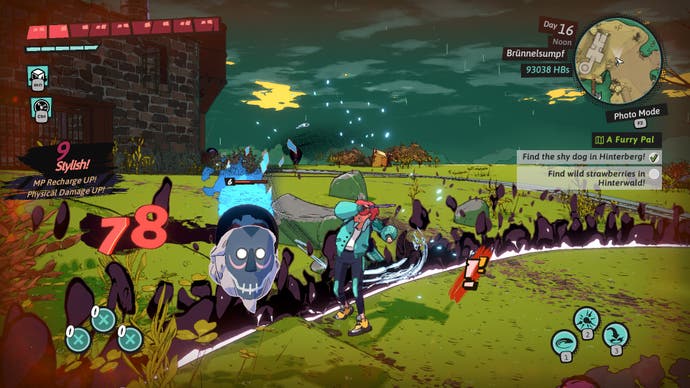
All of this cludges together with interesting enemies and a few surprisingly good bosses. Combat is sort of sectioned off from the rest of the game: when enemies pop up, you're suddenly surrounded by a perimeter. I normally hate this kind of thing for imposing a pace and order on me that I never asked for, and I suspected early on that I might dread the thought of a new encounter. But, you know: combos, a spin attack, the ability to trap people in jelly. It balances out.
Back in town, you get to finesse all of your options: buying new gear, upgrading swords, buying new attacks and charms that boost stats and require a bit of inventory management. It goes deep. At one point I had found some great armour but it was covered in goo, and I didn't know who in town would be able to remove that. And - not talking about goo anymore - this stuff spills out in interesting ways too. Pretty soon I was collecting trash for someone, trying to help save someone else's shop, looking for lost objects and the perfect dog snack. There's a confidence here that's utterly charming, and not just in the soapy side-quest stories and the dinner engagements. There's a confidence in the belief that players will muddle through in their own way. Just as you choose which dungeon to do each day, in choosing who to hang out with, you're choosing how the game's complexity unlocks. What I'm getting at, I guess, is that you may have found a way to de-goo your sick armour long before I did.

All of this is neat and lovely and comes together very cleanly, the dungeons and life back at the village, and it's tied together with an art style that's cartoonish and pleasantly goofy, and which utilises cel-shading that's enhanced by judicious use of halftone. I would do anything for judiciously used halftone.
But it's not the whole the game, and this is what I was getting at earlier. I don't want to say too much here, but while Dungeons of Hinterberg hinges on everything that's good about fantasy and magic, it uses all this stuff to tell a handful of dovetailing stories that are all grounded in very real things. The protagonist's story hinges on burnout, but also the question of how one should spend their time and what they should value, while the story that unravels in the village, and slowly starts to blur the distinctions the game has been careful to build up, touches on everything from the cost of tourism to the question of authenticity. It's gripping stuff.
Somehow, Dungeons of Hinterberg manages to make sense of all this, just as it juggles ice and autumn forest and swamp biomes, and puzzles about water levels and puzzles about rotating bridges. It's happy to live with strange contradictions, I think, and nothing sums this up so much as the exit from a dungeon itself. You finish the final puzzle, the final enemy, and then there's a neat little desk stood in a corner so you can stamp your book and register the dungeon completed. All very tidy and bureaucratic. And then you leave, through a shifting purple portal that burns like flame.
A Dungeons of Hinterberg review code was provided by Curve Games.




